You are using an out of date browser. It may not display this or other websites correctly.
You should upgrade or use an alternative browser.
You should upgrade or use an alternative browser.
Essential The Official ESPN Insider Thread (ESPN+)
- Thread starter the cool
- Start date
More options
Who Replied?One month in, one key change for every team
As we near May, teams are beginning to evaluate where they stand, assessing their respective strengths and weaknesses. It's a time for taking inventory. Even the best teams -- even the Astros -- have weaknesses. With that in mind, let's find potential fixes for all 30 major league teams.


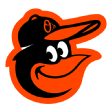
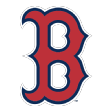


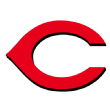

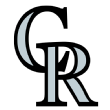



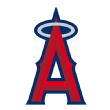
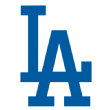



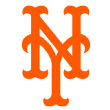
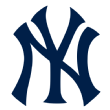








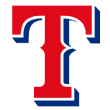

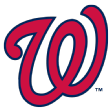
Dr. Narcisse
Veteran
Kiper's Round 1 winners, question marks for 2018 NFL draft
We had Heisman Trophy winners at picks 1 and 32. We had several trades, including three for teams moving up to pick quarterbacks. We had a couple of major reaches on my Big Board. And the biggest surprise of the night might have been that Bill Belichick didn'ttrade out of his two picks.
Here are the moves I liked from the first round of the 2018 NFL draft, along with the picks and deals that provide more questions than answers. If you don't see your team here, remember, I'm going to break down all 32 teams in my post-draft grades on Saturday night. Here are my best available prospects for Day 2.
Winners

Baltimore Ravens
Ozzie Newsome's final draft in charge of the Ravens' front office went just how he likes it. He traded down twice (from No. 16 to No. 22 to No. 25) and ended up with a guy he likes. South Carolina tight end Hayden Hurst was neck and neck with South Dakota State's Dallas Goedert for the top tight end in this class. Hurst is a complete player who takes pride in his blocking. He really impressed me with his maturity when I talked to him. That's a good fit for the Ravens, who have tried to improve their weapons around Joe Flacco.
And speaking of Flacco, Newsome had one more trade in him that puts the veteran quarterback on notice. Newsome dealt picks 52 and 125 -- plus a second-round pick in 2019 -- to move up to No. 32 to take Louisville quarterback Lamar Jackson, who now will have a fifth-year option, which is extremely important for quarterbacks. Flacco is 33 and is coming off a run of questionable seasons. He has one year left on his deal. Jackson isn't ready to push Flacco, but he gives them a tantalizing developmental option if Flacco has another clunker of a season.

Los Angeles Chargers
How did Florida State safety Derwin James make it to No. 17? With no top-tier nose tackles on the board there, general manager Tom Telesco didn't have to contemplate passing over the best player available for a need position. James is going to play immediately, and I think he'll be on my all-rookie team in 2018. I love this pick.

Arizona Cardinals
I know UCLA quarterback Josh Rosen has durability concerns, and he has battled some injuries. There also are questions -- fair or not -- about his leadership skills. Does he have that extra intangible to be the great quarterback he is capable of being? On the field, he's NFL-ready. He makes throws few quarterbacks can. And people forget that Rosen outplayed Sam Darnold when USC and UCLA met late last season. Rosen is a good player, and he's going to be motivated. I wouldn't be shocked if he played early for Arizona, which has Sam Bradford and Mike Glennon signed to short-term deals.
Plus, the Cardinals jumped two spots to get in front of the Dolphins to take Rosen and only gave up extra third- and fifth-round picks.

Atlanta Falcons
Calvin Ridley at No. 26 is going to be a steal, and the Falcons are going to be a prolific offense -- again -- in 2018. The Alabama wide receiver dropped a little bit after the combine, but he's the best wideout in this class, and he already is a great route runner. Trust the tape on Ridley. And watch him and Julio Jones light up defenses.
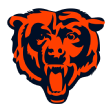
Chicago Bears
I didn't think Georgia linebacker Roquan Smith would make it to No. 8; he had been trending up over the past few weeks, and I thought the Colts might take him at pick 6. He's going to be the leader of the Bears' defense, and he can be a great inside linebacker in a 3-4 defense. He's going to run sideline to sideline, and he's one of the best tacklers to come out of college in the past decade. I like that Chicago didn't overthink this one.

Denver Broncos
I never thought NC State pass-rusher Bradley Chubb was going to make it to the Broncos at No. 5. He's not a perfect fit for a 3-4 defense, but he's versatile. And now he gets to learn from Von Miller, one of the league's best edge defenders. Chubb is relentless, and he already has advanced pass-rushing moves. My best comp for Chubb throughout the process has been longtime Dolphins defensive end Cameron Wake.
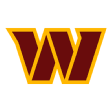
Washington Redskins
Washington gets a bump here for filling its biggest need with Alabama nose tackle Da'Ron Payne, who fell in the Redskins' lap at No. 13. I had given them Payne in a few mock drafts, and this pick just makes sense.
Question marks

Cleveland Browns
New Browns general manager John Dorsey is rolling the dice by taking Oklahoma quarterback Baker Mayfield with the No. 1 pick. Yes, we heard the buzz over the past few days; I even changed my final mock draft on Thursday morning. And we know Browns consultant Scot McCloughan, the former Redskins GM, thought Mayfield was the best QB in this draft. But I still thought Dorsey might take Darnold or Wyoming's Josh Allen, who were both higher on my board.
I know Dorsey saw Mayfield play in person in 2017, and I know Dorsey liked him after meeting with him. And listen, I like Mayfield as a player. But he's the No. 12 prospect on my board, and I don't like him as the first overall pick. He's not very big (6 feet, 215 pounds), and he played in a creative offense at Oklahoma in which pass-catchers were running open on every play. Now, Mayfield has an underrated arm, and he's the ultimate leader and competitor. But slow down on the Russell Wilson comps. Wilson has the athleticism of an NFL running back and a huge arm. These are distinct players.
As for the Browns' other choice -- they got the No. 4 overall pick from the Texans in the Deshaun Watson deal last year -- I would have gone with Bradley Chubb over Ohio State cornerback Denzel Ward. You put Chubb with Myles Garrett and Emmanuel Ogbah, and that's an elite edge-rushing trio. And pass-rushers help the secondary too. Ultimately, though, I don't blame Dorsey & Co. for filling a need, and Ward is the best true corner in this class.

New Orleans Saints
Maybe I didn't learn my lesson after I hated the Saints giving up a 2018 second-round pick to move up to take Alvin Kamara last year. (Hey, I did adjust my re-grades.) But giving up next year's first-round pick (plus the No. 27 pick and a fifth-rounder this year) to take a raw pass-rusher at pick 14 is too much. Texas-San Antonio's Marcus Davenport is a 6-foot-6, 264-pound athletic specimen, but he's going to need time to adjust to the NFL. New Orleans is clearly going for it in 2018, but Davenport can't be counted on to be an impact player as a rookie.
On the other side of this, new Packers general manager Brian Gutekunst's first draft move was to add a 2019 first-round pick. Not bad.

Seattle Seahawks
This is a head-scratching pick. Rashaad Penny in Round 1? The San Diego State running back is the No. 57 player on my Big Board. And look at the backs still on the board -- Derrius Guice (LSU), Sony Michel and Nick Chubb (Georgia). Even Ronald Jones III(USC) had a higher grade than Penny. If Seattle wanted a bell cow back, it could have done better. And what about defensive back or offensive line or edge rusher? I can't wrap my head around this one.

Pittsburgh Steelers
Virginia Tech's Terrell Edmunds was my eighth-ranked safety. Eighth. And the Steelers took him at No. 28 overall. There's no doubt that he's physically gifted like his brother, Tremaine, who went 12 spots ahead of him, but the tape doesn't show a first-round player. In fact, I thought he might be underrated as a versatile safety who could play in the slot. But that's when I thought he was more likely to go at the end of Day 2. This is another head-scratcher.

New York Giants
You should know my defining strategy if I were an NFL general manager: I'd NEVER take a running back in Round 1. Seriously. There's value on Day 2. So, Penn State running back Saquon Barkley is a great player -- he's my No. 1 prospect in this class -- but I wouldn't have picked him at No. 2. Especially when Eli Manning is 37 years old and there's no real answer behind him. Sam Darnold was on the board, and that's who I would have picked. Now, watch Barkley win offensive rookie of the year. ...

Dallas Cowboys
The Cowboys reached at No. 19. They could have had Calvin Ridley, the top wide receiver in this draft. They could have had Alabama inside linebacker Rashaan Evans, the No. 23 player on my Big Board. Instead, they went with Boise State linebacker Leighton Vander Esch, who had one great season and a great combine. Is he a one-year wonder? I ranked him No. 37 overall in this class. Sure, linebacker was one of the Cowboys' top needs, but this is a reach.

Buffalo Bills
The Bills moved up from No. 12 to No. 7 and gave up two second-round picks to get their quarterback of the future in Wyoming's Josh Allen. I like Allen -- he's a rare talent -- but Buffalo has too many holes to give up premium picks to move up five spots. This could turn out well if Allen isn't rushed into playing; Buffalo does have AJ McCarron as starter for 2018. Buffalo also moved up to take Virginia Tech linebacker Tremaine Edmunds, giving up an extra third-round pick while swapping No. 22 for No. 16. Those are picks the Bills really needed.

Cincinnati Bengals
I had a late second-round grade on Ohio State center/guard Billy Price, whom the Bengals took at No. 21, but part of that is because Price got injured at the combine (torn pectoral). I just think Iowa's James Daniels is a better player, and he was still on the board.

Cleveland Browns
New Browns general manager John Dorsey is rolling the dice by taking Oklahoma quarterback Baker Mayfield with the No. 1 pick. Yes, we heard the buzz over the past few days; I even changed my final mock draft on Thursday morning. And we know Browns consultant Scot McCloughan, the former Redskins GM, thought Mayfield was the best QB in this draft. But I still thought Dorsey might take Darnold or Wyoming's Josh Allen, who were both higher on my board.
I know Dorsey saw Mayfield play in person in 2017, and I know Dorsey liked him after meeting with him. And listen, I like Mayfield as a player. But he's the No. 12 prospect on my board, and I don't like him as the first overall pick. He's not very big (6 feet, 215 pounds), and he played in a creative offense at Oklahoma in which pass-catchers were running open on every play. Now, Mayfield has an underrated arm, and he's the ultimate leader and competitor. But slow down on the Russell Wilson comps. Wilson has the athleticism of an NFL running back and a huge arm. These are distinct players.
As for the Browns' other choice -- they got the No. 4 overall pick from the Texans in the Deshaun Watson deal last year -- I would have gone with Bradley Chubb over Ohio State cornerback Denzel Ward. You put Chubb with Myles Garrett and Emmanuel Ogbah, and that's an elite edge-rushing trio. And pass-rushers help the secondary too. Ultimately, though, I don't blame Dorsey & Co. for filling a need, and Ward is the best true corner in this class.

New Orleans Saints
Maybe I didn't learn my lesson after I hated the Saints giving up a 2018 second-round pick to move up to take Alvin Kamara last year. (Hey, I did adjust my re-grades.) But giving up next year's first-round pick (plus the No. 27 pick and a fifth-rounder this year) to take a raw pass-rusher at pick 14 is too much. Texas-San Antonio's Marcus Davenport is a 6-foot-6, 264-pound athletic specimen, but he's going to need time to adjust to the NFL. New Orleans is clearly going for it in 2018, but Davenport can't be counted on to be an impact player as a rookie.
On the other side of this, new Packers general manager Brian Gutekunst's first draft move was to add a 2019 first-round pick. Not bad.

Seattle Seahawks
This is a head-scratching pick. Rashaad Penny in Round 1? The San Diego State running back is the No. 57 player on my Big Board. And look at the backs still on the board -- Derrius Guice (LSU), Sony Michel and Nick Chubb (Georgia). Even Ronald Jones III(USC) had a higher grade than Penny. If Seattle wanted a bell cow back, it could have done better. And what about defensive back or offensive line or edge rusher? I can't wrap my head around this one.

Pittsburgh Steelers
Virginia Tech's Terrell Edmunds was my eighth-ranked safety. Eighth. And the Steelers took him at No. 28 overall. There's no doubt that he's physically gifted like his brother, Tremaine, who went 12 spots ahead of him, but the tape doesn't show a first-round player. In fact, I thought he might be underrated as a versatile safety who could play in the slot. But that's when I thought he was more likely to go at the end of Day 2. This is another head-scratcher.

New York Giants
You should know my defining strategy if I were an NFL general manager: I'd NEVER take a running back in Round 1. Seriously. There's value on Day 2. So, Penn State running back Saquon Barkley is a great player -- he's my No. 1 prospect in this class -- but I wouldn't have picked him at No. 2. Especially when Eli Manning is 37 years old and there's no real answer behind him. Sam Darnold was on the board, and that's who I would have picked. Now, watch Barkley win offensive rookie of the year. ...

Dallas Cowboys
The Cowboys reached at No. 19. They could have had Calvin Ridley, the top wide receiver in this draft. They could have had Alabama inside linebacker Rashaan Evans, the No. 23 player on my Big Board. Instead, they went with Boise State linebacker Leighton Vander Esch, who had one great season and a great combine. Is he a one-year wonder? I ranked him No. 37 overall in this class. Sure, linebacker was one of the Cowboys' top needs, but this is a reach.

Buffalo Bills
The Bills moved up from No. 12 to No. 7 and gave up two second-round picks to get their quarterback of the future in Wyoming's Josh Allen. I like Allen -- he's a rare talent -- but Buffalo has too many holes to give up premium picks to move up five spots. This could turn out well if Allen isn't rushed into playing; Buffalo does have AJ McCarron as starter for 2018. Buffalo also moved up to take Virginia Tech linebacker Tremaine Edmunds, giving up an extra third-round pick while swapping No. 22 for No. 16. Those are picks the Bills really needed.

Cincinnati Bengals
I had a late second-round grade on Ohio State center/guard Billy Price, whom the Bengals took at No. 21, but part of that is because Price got injured at the combine (torn pectoral). I just think Iowa's James Daniels is a better player, and he was still on the board.

Arizona Cardinals
Josh Rosen, QB, UCLA (pick No. 10)
Sam Bradford simply hasn't been able to stay on the field in his career. The Cardinals did have to give up a third- and fifth-round pick to move up from 15 to 10 to get him, but earlier in the process it seemed as if they would've needed to get to No. 2 overall to land Rosen. He doesn't have the biggest arm, but Arizona will surround him with weapons (drafted WR Christian Kirk, RB Chase Edmonds) and he has the ability to process information quickly and dissect defenses at the highest level. And he comes into the league with a major chip on his shoulder.

Atlanta Falcons
Calvin Ridley, WR, Alabama (No. 26)
Mohamed Sanu and Julio Jones alongside him.

Baltimore Ravens
Hayden Hurst, TE, South Carolina (No. 25)
Mark Andrews) and fourth-rounder (WR Jaleel Scott) and still got my top tight end in Hurst. Then Newsome used one of those picks and a 2019 second-rounder (sorry, Eric DeCosta!) to move back up and land a potential franchise quarterback in Lamar Jackson. While he is 25 years old already, Hurst is a classic flex tight end and will be Joe Flacco's safety blanket ... before he's Jackson's best friend. Another great job by Newsome.

Buffalo Bills
Tremaine Edmunds, OLB, Virginia Tech (No. 16)
Josh Allen at No. 7, Buffalo leveraged its third-round pick from dealing Tyrod Taylor to move up again from 22 to 16 and land Edmunds, whom I had 12th on my board. Head coach Sean McDermott has a rich history from Carolina of having athletic linebackers that can cover, and Edmunds fits that mold. Only 19 years old, Edmunds ran a 4.54 40-yard dash at 6-4, 259, at the combine and has one of the best toolboxes of any prospect in this class. He's an immediate upgrade for Buffalo's linebacking corps.

Carolina Panthers
Ian Thomas, TE, Indiana (No. 101)
Cam Newton with weapons, landing speedy WR D.J. Moore in the first round and Thomas with the first pick of the fourth round. Thomas has upside as a flex tight end and is a good blocker inline already. He has overcome a lot to make it to this point, losing both of his parents and being raised by older siblings (he's one of eight) since he was 9 years old. He played two years at Nassau Community College before transferring to Indiana. He'll have a good opportunity to learn behind starting TE Greg Olsen, who might not have many years left.

Chicago Bears
James Daniels, C, Iowa (No. 39)
Roquan Smith at 8 and trading up to 51 to add a dynamic wide receiver (Anthony Miller) for Mitchell Trubisky, but Daniels is the best value here. My 18th-ranked overall prospect, Chicago grabbed him at 39. Daniels played mostly at center for Iowa, but might start at guard with Cody Whitehair already manning that spot. Regardless, Daniels is a young (only 19 years old) and athletic interior offensive lineman who should contribute right away. Love this pick.

Cincinnati Bengals
Mark Walton, RB, Miami (FL) (No. 112)
Giovani Bernard (2013, second), Jeremy Hill (2014, second) and Joe Mixon (2017, second) -- at the position in recent years. I had Walton as my ninth-ranked RB in this class, but a season-ending ankle injury hurt his stock. There were several people I spoke with at the Miami program who believed he was the best athlete on the team, and if he can recover fully, he'll be a nice change-of-pace back in Cincinnati with some upside. I liked the third-round picks of Jessie Bates III and Sam Hubbard as well.

Cleveland Browns
Nick Chubb, RB, Georgia (No. 35)
Baker Mayfield (No. 1 overall) and Denzel Ward (No. 4), but there's no questioning this pick. One of my colleague Louis Riddikk's favorite players in the draft, Chubb has terrific lateral agility as a runner and just crushed the combine (4.52 40, 38-inch vertical jump, 10-foot, 8-inch broad jump). My third-ranked RB was available here only because he tore three ligaments in his left knee in 2015. He'll be a nice rotational back with free-agent signing Carlos Hyde.

Dallas Cowboys
Connor Williams, G, Texas (No. 50)
Chaz Green) -- and guard was a need area. Williams was a left tackle at Texas, but short arms (33 inches) probably will bump him inside for the Cowboys. A left knee injury forced him to miss most of the 2017 season, but he's solid in pass protection and an effective run-blocker. The Cowboys want to get back to running the ball behind Ezekiel Elliot to set up play-action. Williams, my 37th-ranked player, will help immediately.

Denver Broncos
Bradley Chubb, DE, NC State (No. 5)
Detroit Lions[/paste:font]
Frank Ragnow, C, Arkansas (No. 20)
Travis Swanson, so Ragnow can plug in at center and move Graham Glasgow to left guard. A late riser, you know exactly what you're getting with him -- a high I.Q. leader who can take charge of the huddle and make the proper calls. And that's vital for a Lions team that must keep Matthew Stafford upright. An ankle injury cut short Ragnow's 2017 season, but otherwise durability isn't a concern for the three-year starter. I also liked the pick of Tyrell Crosby in the fifth round and it wouldn't shock me if he contributes.

Green Bay Packers
Jaire Alexander, CB, Louisville (No. 18)
Houston Texans[/paste:font]
Justin Reid, S, Stanford (No. 68)
Deshaun Watson and trading away Brock Osweiler. Given those limitations, new GM Brian Gaine did a great job maximizing value. Reid is a fringe first-round talent at safety, who will provide good depth and is an athletic ball hawk. Safety wasn't a pressing need, but Reid was too good a player to pass up at 68. I also really liked the pick of OG Martinas Rankin, who should be the starter on the interior for an offensive line that needs help, and TE Jordan Akins, an athletic move tight end. Really nice job by the Texans.
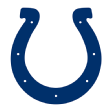
Indianapolis Colts
Quenton Nelson, G, Notre Dame (No. 6)
Andrew Luck -- nothing else really matters. The Colts were able to get trade down from No. 3 to get Nelson at No. 6, while also collecting two second-round picks, which turned into another guard (Braden Smith, Auburn) and a much-needed pass-rusher (Kemoko Turay, Rutgers). Yes, it's a guard at No. 6 overall, but the value is there because of the extra picks and since Nelson is one of the top three players in this class.
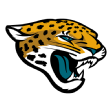
Jacksonville Jaguars
Taven Bryan, DT, Florida (No. 29)
Kansas City Chiefs[/paste:font]
Derrick Nnadi, DT, Florida State (No. 75)
Bennie Logan's departure and Nnadi is a good football player who was hurt by a bad combine. He's a much better football player than tester. While not a three-down player, he should be able to help at the nose tackle spot in the Chiefs' 3-4 scheme and is NFL ready right now.
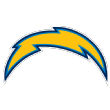
Los Angeles Chargers
Derwin James, S, Florida State (No. 17)
Los Angeles Rams[/paste:font]
Obo Okoronkwo, OLB, Oklahoma (No. 160)
Brandin Cooks, Marcus Peters, Aqib Talib). I had Okoronkwo as the 95th-best player in this draft, so to get him at 160 is definitely a good value. He's not a great test, but a good football player and a relentless pass-rusher. For a team that still needs edge pass-rushing help, I liked this pick.

Miami Dolphins
Jerome Baker, OLB, Ohio State (No. 73)
Minnesota Vikings[/paste:font]
Mike Hughes, CB, UCF (No. 30)
Trae Waynes after this season.
By moving back from pick 94 to 102, the Vikings also got a good developmental upside player in Jalyn Holmes and another sixth-round pick that they used to move back up into the fifth round and take the best kicker in the draft (Daniel Carlson). I really love this move, especially with how much heartbreak Minnesota fans have had from the kicking game. Carlson is clutch.

New England Patriots
Sony Michel, RB, Georgia (No. 31)
Dion Lewis, Michel excelled in a rotational role in Georgia and should be kept fresh in New England as well.

New Orleans Saints
Natrell Jamerson, S, Wisconsin (No. 164)
Alvin Kamara last year, I think this is a steal. Jamerson had 51 tackles and 10 pass breakups last season, but I really love his special-teams ability. I talked to some teams who said he was the special-teams player in the entire draft. He can cover kicks, return kicks, be a jammer and a gunner -- you want it, he can do it. A heck of a football player.

New York Giants
Will Hernandez, G, UTEP (No. 34)
Saquon Barkley. He was is a nice value as the second pick in Round 2, as I had him 25th on my board.

New York Jets
Sam Darnold, QB, USC (No. 3)
Josh McCown, and a great offensive coordinator in Jeremy Bates. Don't think they won't hold it over the Giants for passing on him at No. 2 as well if Darnold turns into a star.

Oakland Raiders
Mo Hurst, DT, Michigan (No. 140)
Hurst dropped strictly because of a heart condition found during the medical checks at the combine, and was taken off of several teams' boards as a result. But at pick 140 in the fifth round, the reward outweighs the risk. A perfect fit as a three-technique in Oakland's 4-3 scheme, Hurst can get up the field, penetrate and disrupt. Even if Oakland has to limit him because of the medical issue, it's still getting a really productive player and filling a big need. Of all the Michigan defensive line players drafted last season, I thought Hurst was the most disruptive. This could end up being one of the steals of the draft.

Philadelphia Eagles
Dallas Goedert, TE, South Dakota State (No. 49)
Trey Burton gone to Chicago, and Goedert is a perfect fit. A rare two-way tight end who can both block inline and is fast enough to stretch the seam in the passing game, Goedert is an ascending player --164 of his 198 career catches at South Dakota State were in the past two seasons. It also didn't hurt that the Eagles traded up ahead of the Dallas Cowboys at No. 49 -- a team that was desperate for a tight end with Jason Witten planning to retire -- to grab him.

Pittsburgh Steelers
James Washington, WR, Oklahoma State (No. 60)
Martavis Bryant and replaced him with Washington. Though Washington isn't as big or fast as Bryant, he's a young, hungry receiver who can track the deep ball well and is very athletic. Not only was this a good pick where Pittsburgh got him (ranked No. 50 on my board), but it's a dream come true for a rookie receiver. Washington should thrive with the attention paid to Antonio Brown and JuJu Smith-Schuster.

San Francisco 49ers
Fred Warner, ILB, BYU (No. 70)
Seattle Seahawks[/paste:font]
Jamarco Jones, OT, Ohio State (No. 168)
Germain Ifedi led the NFL with 16 penalties last season, so there's a chance Jones pushes for the starting job.
I'd be remiss not to mention Shaquem Griffin as well. I got to know him during the season covering a couple of UCF games and no one has been in his camp for longer than I have -- I'm just going on the value of where they got Jones. The punter Michael dikkson is a stud as well -- he has All-Pro potential.

Tampa Bay Buccaneers
Vita Vea, DT, Washington (No. 12)
Gerald McCoy well, and all of a sudden Tampa Bay's defensive line (which had an NFL-low 22 sacks in 2017) looks formidable. And this ultimately comes down to whether you'd rather have a player like Minkah Fitzpatrick or Vea, Carlton Davis, M.J. Stewart and Jordan Whitehead. Given Tampa Bay's need for secondary help, I'd definitely choose the latter. Tampa Bay's move down from No. 7 to No. 12 is one of the most underrated moves in this year's draft.
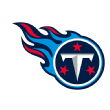
Tennessee Titans
Rashaan Evans, ILB, Alabama (No. 22)
Harold Landry in the second round as well, even though Tennessee gave up a third-rounder to move up and get him, but I'm going with Evans because he can be the off-ball linebacker the Titans need. Tennessee had five picks in the first three rounds last year, so this draft was about quality over quantity. I'm usually not a fan of moving up (as the Titans did twice), but their two biggest needs were edge rusher and inside linebacker -- and they knew Evans was going to New England at 23 if they didn't move ahead of the Patriots. It doesn't hurt that new head coach Mike Vrabel will be able to coach them up.

Washington Redskins
Derrius Guice, RB, LSU (No. 59)
The Redskins managed to move back in the second round from No. 44 to No. 59 and still grab Guice, who has star potential if they can keep him on the straight and narrow. He was a late first-round talent whom they got at the end of the second. The third-rounder they picked up turned into Geron Christian, an offensive tackle who has starter potential if developed properly. He can also shift inside to guard if needed.
storyteller
Veteran
They are broken up into different links. So far they have the:
Hawks, Nets, Hornets, Lakers, Heat, Grizzlies, Timberwolves, Knicks, Thunder, Suns, Kings, Spurs and Wizards.
Who do you want to see?
storyteller
Veteran
They are broken up into different links. So far they have the:
Hawks, Nets, Hornets, Lakers, Heat, Grizzlies, Timberwolves, Knicks, Thunder, Suns, Kings, Spurs and Wizards.
Who do you want to see?
Knicks and Nets please, many thanks in advance fam.
What moves can and should the Knicks make in the offseason?Knicks and Nets please, many thanks in advance fam.
A different offseason but more of the same in New York.
Missing the playoffs once again correlates with the New York Knicks interviewing for a new head coach, their third search since 2014.
While the head-coaching search is the first priority (and most important) this offseason, New York is faced with questions ranging from the health of (and the potential extension for) Kristaps Porzingis, finding a resolution with Joakim Noah and continuing a rebuild with a top-10 selection in June.
Embrace the rebuild
When New York looks back at the summer of 2016, they will see it as a missed opportunity.
Flushed with cap space from the spike in revenue from TV deals, the Knicks, like most teams, took an aggressive approach, adding veterans Joakim Noah and Courtney Lee. Add both players with Kristaps Porzingis and Carmelo Anthony, and a 32-win team in the previous season could arguably compete for a playoff a spot.
Now two years removed from the spending spree, the Knicks' win total is a minus-4 and a rebuilding team is now straddled with the $75 million left on the Lee and Noah contracts.
What the Knicks failed to realize at the time is the distinction of competing to be a top team in the Eastern Conference versus one looking to just get into the playoffs.
Now with Anthony a distant memory, New York heads into the offseason with a clear path to rebuilding:
- The draft: top-10 pick and a second-rounder in the 30s.
- Player development: Porzingis, Tim Hardaway Jr., Frank Ntilikina and Damyean Dotson.
- Identifying second-chance free agents: Trey Burke and Michael Beasley.
- Trade dialogue: The future of Courtney Lee.
- Prioritize cap space: Take a back seat to free agency this summer.
Patience with Kristaps Porzingis
Taking a conservative approach this summer on extension talks with Porzingis should be less about the durability issues of its franchise player but more about the summer of 2019.
Yes, Porzingis continues to rehab from season-ending ACL surgery on his left knee. The injury will sideline Porzingis past the Oct. 15 deadline to extend rookies -- not to mention that he had missed 33 games before the knee injury with various ailments. However, Porzingis should be an outlier compared to previous ACL injuries.
Why the Knicks should take a backseat to extension talks has more to do about the summer of 2019.
Like Devin Booker, Porzingis' $17 million free-agent cap hold in 2019 is significantly less than his projected $27 million salary in the first year of an extension. Commit to Porzingis before the rookie deadline and the Knicks will lose $10 million in cap space, a significant amount of money for a team that projects to have $30 million-plus in room -- a figure that could increase based on the uncertain future of Noah.
Treat Joakim Noah like a free agent
Free agency for Noah is not officially until the summer of 2019.
However, with both sides at a standstill regarding the $36 million left on his deal, not to mention an untradable contract with two years left, Knicks management's best course is allowing Noah and his representatives to meet with teams starting in July as if he were a free agent looking for a new deal.
Similar to the March 1 waiver buyout, when agents shop their clients looking for a safety net with a playoff team, the same could be done with Noah. Of course, the Knicks would have to give permission, something that will occur if there is a resolution in sight.
Do not discount that Noah is on the roster for next season and with a role on the court, not sitting at home. With a new coach, plus the possibility of Enes Kanter and Kyle O'Quinn not on the roster, Noah could be the lone center.
One thing the Knicks should not entertain is waiving Noah with the intent of stretching his remaining salary over the next five seasons. As Brooklyn (Deron Williams) and Detroit (Josh Smith) have learned, allowing money to count against the cap for over five seasons limits flexibility even for short-term relief.
Summer cap breakdown
2018-19 salary breakdown
Player 2018-19
1. Enes Kanter (player option) $18,622,514
2. Joakim Noah $18,530,000
3. Tim Hardaway Jr. $17,325,000
4. Courtney Lee $12,253,780
5. Lance Thomas $7,119,650
6. Kristaps Porzingis $5,697,054
7. Ron Baker (player option) $4,536,000
8. Kyle O'Quinn (player option) $4,256,250
9. Emmanuel Mudiay $4,294,480
10. Frank Ntilikina $4,155,720
11. Damyean Dotson $1,378,642
12. Trey Burke (non-guaranteed) $1,795,015
13. Troy Williams (non-guaranteed) $1,544,951
14. First-rounder (first-round hold) $3,708,120
15. Michael Beasley1 (free-agent hold) $1,499,697
16. Jarrett Jack1 (free-agent hold) $1,499,697
Total $108.2 million
Salary cap $101.0 million (projected)
1. Non-Bird rights
Cap space in New York will be based on two factors: the $18.6 million player option of Kanter and the $36 million owed to Noah.
If Kanter returns and there is no resolution with Noah, New York will be right at the salary cap. In theory, that could be a good problem to have for a team that is rebuilding and looking have cap flexibility in 2019, not this summer with an average -- at best -- free-agent class.
The decision on both will occur before July 1, giving the Knicks a clear direction on how to proceed in free agency.
If Kanter and O'Quinn (player option) and Noah's $18.3 million cap hit remains, New York will have $18.6 million in room.
Dates to watch
What New York has available to spend in free agency will be dictated by three players: Kanter, O'Quinn and Ron Baker. All three have until the end of June to decide on their player option for the 2018-19 season.
Kanter and O'Quinn both have until June 29 to either stay in New York for another season or become unrestricted free agents. Kanter with a $18.6 million salary next season is unlikely to (and shouldn't) opt out of his contract. A lukewarm free-agent market of teams with available cap space would see Kanter take a significant pay cut if he decided to become a free agent.
O'Quinn's decision will depend on whether he could recoup his $4.3 million salary with a new team. Because cap space this summer is restricted, teams will be putting a greater premium on their exceptions (room, midlevel or tax). The one thing that O'Quinn can ill afford is opting out and losing $2 million in salary when only the minimum exception is available.
Baker, after suffering a season-ending left shoulder injury, will opt into his $4.5 million contract for 2018-19.
Two Knicks, Trey Burke and Troy Williams, have non-guaranteed contracts for 2018-19 with small guarantees if they are on the roster past Aug. 1.
Burke will have $100,000 of his $1.8 million contract guaranteed if he is not waived by July 10. Like Burke, Williams has $100,000 of his contract guaranteed, but on Aug. 1. Expect both players to be on the Knicks' roster when training camp opens in September.
Restrictions
When New York signed Tim Hardaway Jr. to a $72 million offer sheet last July they did so by adding a 15 percent trade bonus in the contract. The bonus language was added to give Atlanta less incentive to eventually match the offer sheet. Once the Hawks passed, New York would now be responsible for the additional compensation if Hardaway is eventually traded.
The bonus has decreased since the time of the signing but is still $5.3 million. The amount owed at the time of any trade would be added to the years left on the contract (not including a player option). In the case of Hardaway, that would be $20 million and $20.7 million over the next two seasons.
The free-agent focus
The decision on what Kanter and O'Quinn do with their player options will either have New York return its starter and backup center or see the team searching for replacements. Those choices won't come until closer to the draft.
For Mark Bartelstein, the agent for Kanter, three factors will come into play.
Can Kanter secure a long-term contract with New York or another team that provides security but at a lower salary ($13-14 million range)? If the answer is no, expect Kanter to opt in to his $18.3 million contract.
The summer of 2019 will come into the equation also when the cap is expected to rise from $101 million to $108 million and the teams that have cap space this summer will likely double. A good season in 2018-19 could parlay into a significant contract for Kanter.
The other question is his role under the Knicks' new coach.
For O'Quinn, the process is similar but at less of a risk.
Because of his $4.3 million salary next season, O'Quinn at the minimum should see offers in the comparable price range.
Extension-eligible candidates
Aside from Porzingis, New York is not expected to be active when it comes to players who are extension-eligible.
New York has put a high premium on cap space in 2019, and extending a player like Kanter (if he opts in) would see its flexibility become limited. Kanter could receive an extension up to $22.3 million, a salary he will not see when he becomes a free agent in 2019.
Besides Kanter, Noah, Lee, Lance Thomas and O'Quinn (if he opts in) are eligible.
The draft assets
The benefit of rebuilding is a top-10 pick in the draft.
For a second consecutive offseason, New York has the opportunity to build its roster in June.
Here are the players ESPN's Jonathan Givony predicts New York will select in this year's draft:
- No. 9 (own): Collin Sexton, PG, Alabama
- No. 37 (via Philadelphia): Chimezie Metu, C, USC